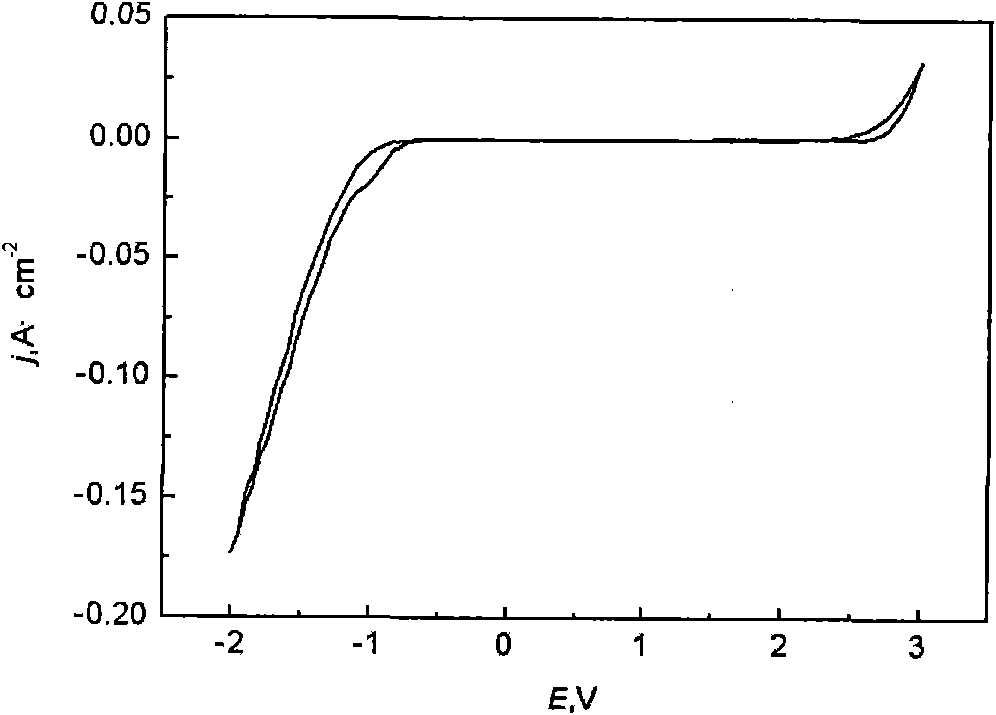Method for preparing organic pollutant-degrading electrode material
A technology of organic pollutants and electrode materials, applied in the field of electrochemistry, can solve the problems of inconvenient control of conditions, complicated process, shortened service life, etc., and achieve the effect of inhibiting the growth of TiC, simple process and prolonging service life.
- Summary
- Abstract
- Description
- Claims
- Application Information
AI Technical Summary
Problems solved by technology
Method used
Image
Examples
Embodiment
[0015] The preparation process of this example includes three steps: pretreatment of titanium substrate, preparation of tantalum intermediate layer and preparation of boron-doped diamond film:
[0016] Substrate pretreatment: select TA2 industrial pure titanium plates with a size of Φ20mm and Φ50mm as the electrode substrate, firstly polish the surface of the electrode substrate, rinse with distilled water, and obtain a uniform and smooth titanium substrate for later use;
[0017] Preparation of the tantalum interlayer: use the magnetron sputtering method to coat and deposit the tantalum interlayer on the surface of the titanium substrate. The target material is Φ50mm pure tantalum (99.99%), fully cleaned with analytical pure acetone and distilled water, and then kept at 100-120°C 2 to 3 hours, remove surface oil and other impurities, then put the treated tantalum target and titanium substrate into the magnetron sputtering apparatus, and vacuumize the sputtering chamber to reac...
PUM
| Property | Measurement | Unit |
|---|---|---|
| electrical resistivity | aaaaa | aaaaa |
| electrical resistivity | aaaaa | aaaaa |
| electrical resistivity | aaaaa | aaaaa |
Abstract
Description
Claims
Application Information
 Login to View More
Login to View More - R&D
- Intellectual Property
- Life Sciences
- Materials
- Tech Scout
- Unparalleled Data Quality
- Higher Quality Content
- 60% Fewer Hallucinations
Browse by: Latest US Patents, China's latest patents, Technical Efficacy Thesaurus, Application Domain, Technology Topic, Popular Technical Reports.
© 2025 PatSnap. All rights reserved.Legal|Privacy policy|Modern Slavery Act Transparency Statement|Sitemap|About US| Contact US: help@patsnap.com


